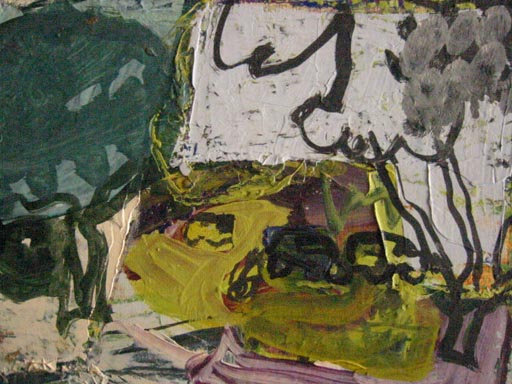Dr Fineltain Ludwig
Le dimanche 5 juillet 1998
Trente ans après ou la magie d'internet
J'avais un copain discret voici exactement 30 ans dans la salle de garde de Sainte Anne, le Dr Tooru O., psychiatre japonais, à l'époque, stagiaire à la Clinique Universitaire de l'Hôpital Psychiatrique
Sainte-Anne a Paris.
Je l'ai retrouvé sur internet.
Il revient à Paris, trente ans après, avec quelques collègues psychiatres, entre le café et le whisky, me poser la question redoutable que voici: "Quelles sont les nouvelles tendances de la psychiatrie française?"
Que vais-je dire à l'ami japonais que je n'ai pas vu depuis si longtemps?
Cet excellent et distingué collègue, professeur de psychiatrie au Japon, a donc souhaité connaître mon avis à propos des grandes tendances de la psychiatrie française depuis ces trente dernières années. Je propose le résumé suivant dans les deux langues, en français et en anglais.
Le lecteur à ce sujet souhaiterait sans doute connaître mes recherches personnelles en psychiatrie. Je m'intéresse particulièrement à la pharmacothérapie et à la psychanalyse des syndromes borderline. J'ai plusieurs patients de ce type en psychothérapie analytique depuis quelques années. J'ai publié quelques articles sur ce sujet. Les recherches sont certainement plus importantes dans les pays anglo-saxons qu'en France. Je pense cependant que la position française est excellente: elle tend, comme je le fais moi-même, à prendre en charge, en même temps, la dimension pharmacologique et psychanalytique du syndrome.
Dr Fineltain Ludwig
Paris le dimanche 05 juillet 1998
Exposé
|
A l'excellent Dr Tooru O. Je vous accueille ici dans mon cabinet psychiatrique privé où depuis près de 30 ans j'ai reçu toutes sortes de patients: simples consultations, psychothérapies, psychanalyses, sexologie et expertises psychiatriques.
|
To the honourable Dr Tooru O. My medical activity is both private and public. Moreover, I am the managing director of a CMPP (children's psycho-pedagogical medical center), near Paris. I am welcoming you in my private office, where I have received all kind of patients for almost 30 years: simple consultations, psychotherapy, psychoanalysis, sexology and professional legal psychiatric advice. The French stand has always been an original one: we still have a natural propensity to give lessons to the whole world, as have done before Gaetan Gatian de Clérambault, Pierre Janet, Deniker, the Henri Ey's organodynamism and the Jacques Lacan's new psychoanalysis. But I doubt we still have the resources for our dreams of grandeur. We keep a social and should I say "socialist" (what I would call "republican") conception of psychiatry: that is to say everyone is entitled to care. Within a geographical division of our country into "sectors" the psychotic patients, whether rich or poor, are all taken care of. Nowadays, psychiatric hospitals are closing down, or at least increasing day-care treatment and laying off. The concept of psychiatric sector, once so rich for its epistemological reflection, is now wilting. Young psychiatrists, one time very interested in psychoanalysis for 50 to 60 per cent of them, are now devoted to pharmacology or cognitive therapy. Psychiatry as a whole is now entering the decade of the brain. In spite of our deep desire to maintain French originality, we surender to the DSM-4, syndromic and non-theoretic psychiatry, thus dividing younger and older generations of French psychiatrists. In France, the "old psychiatric world" refers to theory, nosology and psychoanalysis, while the new world is non-theoretic and syndromic. A legal text from 1990 has notably increased the part played by psychiatric nurses. They now receive and sort out the patients. Is this going forward or backward ? The previous law about confinement, which dated from June 1838 and was world famous, has been abolished and replaced by a new one in 1990. This law is not practically enforceable. Besides, there are too many psychiatrists in France, more than 12.000, much more than in any other economically advanced country and, at the same time, there is a lack of qualified psychiatrists in the public hospitals: 4.800/12.000. Therefore, there has been a "de facto numerus clausus" to psychiatric studies in the last fifteen years or so. |
Fineltain Ludwig 医生
法国,巴黎
1998年7月5日,星期日
法国当代精神病学的主要趋势
30年后在互联网上的重逢
30年前,我有一位在圣安娜的诊室工作的谨慎的朋友, Tooru O. 医生,日本精神病科医生,在那段时期,他是巴黎圣安娜精神病医院的大学临床的实习生。
我在互联网上又遇见了他。
30年以后,他和几个精神病学的同事一起回到了巴黎,闲聊中,他向我提出了以下一个令人生畏的问题: “法国精神病学的新的趋势是什么?”我该怎么回答我这个很久不见的日本朋友呢?这个非凡的以及杰出的同事,日本的精神病教授,希望知道从我的角度过去30年来法国精神病学的大趋势。我用英语和法语两种语言提出了一个总结。
这篇文章的读者希望毫无疑问的理解我个人在精神病方面的研究。我对药疗作用以及边缘综合症的精神分析法治疗特别感兴趣。几年以来我有几个分析性心理疗法这种类型的病人。我在这方面发表了几篇文章。这些研究在盎格鲁—撒克逊的那些国家中肯定要比在法国更加重要。我认为法国的方式是极好的:她趋向,像是我个人所做的,在同时推动,药理学和症候群的精神分析两方面。
Fineltain Ludwig 医生
1998年7月5日,巴黎
我在我的私人精神病诊疗室接待您,在这里,近30年来我接收过各种类型的病人:单纯的诊断,心理疗法,精神分析法的治疗,性学治疗以及精神病学的鉴定。
我的医疗活动同时是私人性的以及公共性的。并且我在靠近巴黎的CMPP(儿童心理教育医疗中心)担任主治医生。
法国还是固定的处于原来的位置:我们总有一种想要给全世界上课的倾向,就像以前的Clérambault, Janet, Deniker, Henri Ey的有机动力论和Jacques Lacan的新精神分析法。
但是,很不幸的,我们不再有使我们扩大的梦想实现的方法。
我们保留了精神病学的社会性的以及共和主义的定义:每一个人都有被治疗的权利。无论是处于国家任何地理划分区域的精神病人,无论贫富。
时下,精神病医院已经关闭,并且实现了院外收容。“精神病科”,这个从前认识论的思考的主要阵地从今以后衰退了。
50%到60%的曾经对精神分析法感兴趣的年轻的精神病专家,从现在开始接受了药理学或者认知的疗法。整体的精神病学进入了大脑的十年。不管我们对法国创新的深切的渴望,从现在开始我们趋向于DSM--4以及非理论性精神病学的和综合症的,同时研究新老精神病专家的不同。法国旧精神病世界同时是理论性的,疾病分类学的以及精神分析法的。然而新世界是非理论性的和综合症的。
给年轻精神病医生提供的教学质量没有太大的变化。大学临床的正式教师提供给医学第二年的年轻大学生刚好有用的初级的教育,然而大学研究班在正式的范围之外不断增长新的知识。
在1990年的通函之后,精神病科护士的角色变得更加广泛:他们接待病人。这到底是一个前进抑或是一个倒退?
所有人都熟知的1838年6月的限制法,已经取消并且被1990年的新法律所替代,新的法律显得并不适用。
在法国另一方面存在着数目巨大并且极端的精神病医生,大约12000人,比其他任何一个经济发达国家都要多,但是同时在公立医院,我们缺少有质量的精神病医生(4800/12000)。
我们的医疗保险通过了一个非常严重的危机。
最后,在未来的大约15年内,精神病学的学习由于数量过大而将被限制。
Répartition des modes d'exercice des 11816 psychiatres en France le 30/09/97
Mode d'Exercice - ------ - Nombre - ------ - Pourcentage - ------ - mixte - ------ - Nombre - ------ - Pourcentage
public exclusif - ------ - 4 813 - ------ - 40,73% - ------ - lib. et sal. assoc. - ------ - 889 - ------ - 7,52%
pub.+ consult.pr - ------ - 130 - ------ - 1,10% - ------ - lib et PH tps partiel - ------ - 538 - ------ - 4,55%
hospitalo-univ. - ------ - 174 - ------ - 1,47% - ------ - lib et att. - ------ - 1 078 - ------ - 9,12%
libéral exclusif - ------ - 2 334 - ------ - 19,75% - ------ - lib. et clin. pr - ------ - 603 - ------ - 5,10%
salarié exclusif - ------ - 338 - ------ - 2,86% - ------ - sal. et clin. pr. - ------ - 6 - ------ - 0,05%
mixte (cf.ci-contre)* - ------ - 3 353 - ------ - 28,38% - ------ - sal. et att. - ------ - 48 - ------ - 0,41%
ne se prononcent pas - ------ - 674 - ------ - 5,70% - ------ - pub. et sal. - ------ - 191 - ------ - 1,62%
TOTAL - ------ - 11 816 - ------ - 100% - ------ - TOTAL - ------ - 3 353 - ------ - 28,38%
Lettre de Psychiatrie Française n° 68, octobre 1997, p 3
Traduction Kim de mars 2018

